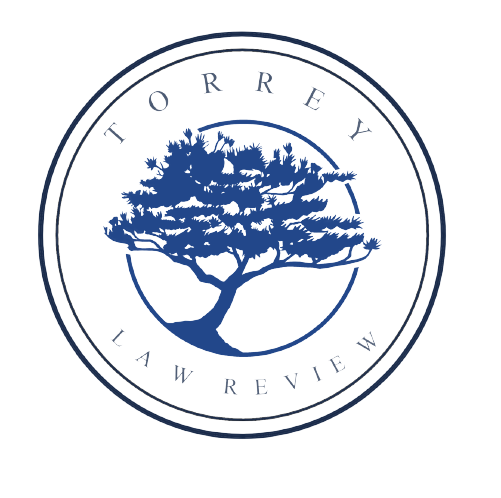Masson v. New Yorker Magazine
Click on the PDF link below for the full version including footnotes.
Introduction
Since the ratification of the Bill of Rights in 1791, the First Amendment has protected citizens’ right to freedom of speech, religion, and the press, albeit with some restrictions. Freedom of the press, which founding father James Madison named “one of the great bulwarks of liberty,” is limited in situations involving libel, where people who make written statements that may harm an entity’s reputation can be sued under state law. Public figures must prove “knowledge of falsity” or “actual malice” on the respondent’s end to sue for libel. Masson v. New Yorker Magazine considers whether false quotations about a public figure meet this requirement.
Facts
Dr. Jeffrey Masson was fired from his position at Sigmund Freud Archives for sharing his controversial opinions on Freud’s seduction theory in a series of 1981 New York Times articles, which upset his employer. He was subsequently interviewed and tape-recorded by journalist Janet Malcolm of The New Yorker. In her article, Malcolm quoted Masson calling himself an “intellectual gigolo” and shared five other quotations portraying Masson negatively. Masson allegedly alerted the magazine that these statements were defamatory, but the article was published in The New Yorker and in Malcolm’s book In the Freud Archives in 1984. Masson sued for libel, claiming the quotations were libelous and did not appear in Malcolm’s recordings. Malcolm claimed she had hand-written notes during several interviews, as her recorder had broken, and was legally protected since the quotations exhibited a “rational interpretation” of Masson’s spoken words.
Legal Background
The District Court of Northern California ruled that Masson’s verbal statements during their interviews could be interpreted ambiguously and therefore could be “substantially true,” granting the writing First Amendment protection. Since the interpretation of the quotes was ambiguous, it did not show “actual malice,” which is necessary when public figures like Masson sue for libel. The Ninth Circuit Court of Appeals affirmed this decision, finding that while Malcolm had perhaps intentionally changed quotes derived from off-record sources, they were not defamatory enough to qualify as “actual malice.” Masson appealed to the Supreme Court.
Holding & Reasoning
The Supreme Court unanimously ruled that Malcolm’s article is not protected by the free expression clause of the First Amendment, because she quoted altered versions of Masson’s words and changed their meaning. Supreme Court Justice Anthony Kennedy’s opinion states that public figures can prove “actual malice” in a suit for libel if they are being falsely quoted in a way that “results in a material change in the meaning of the statement.” Considering the non-fiction nature of the article, a reasonable reader could interpret quotations as a verbatim presentation of Masson’s words. Placing factually incorrect information or altered words in direct quotes could both create falsehoods and negatively characterize Masson, damaging his reputation. The fact that the statements were false and quoted changes the meaning of Masson’s actual words. A change significant enough to misinterpret the meaning of Masson’s verbal statements could equate to a “knowledge of falsity” or “actual malice,” granting Masson the right to sue.
The First Amendment protects journalistic writing under its freedom of speech and press clause. As Masson was a California resident, this case was examined under Cal. Civ. Code Ann. § 45, which states that people can sue for libel if written statements about them appear to be defamatory or harmful to their reputation. As decided in New York Times Co. v. Sullivan, however, public figures must supply proof of “actual malice,” or “knowledge of its falsity” on the respondent’s end, in order to sue for libel. Therefore, to sue for libel and overcome First Amendment protection of Malcolm’s article, Masson needed to supply proof that Malcolm had shown “actual malice.” The Court of Appeals relied on “substantial truth doctrine,” implemented as a result of the New York Times Co. v. Sullivan decision, which protects public figures who can prove “actual malice” if the written statements changed the “substantial truth” of their words. Additionally, Malcolm’s quotations did not pass the “rational interpretation” test, which allows writers to interpret a subject’s words if derived from ambiguous sources such as non-recorded/hand-written interviews. This is because anything that is “rationally interpreted” by Malcolm cannot appear in quotation marks; quotations are expected to be verbatim of Masson’s words and therefore require reliable, non-ambiguous sourcing.
Analysis
Cal. Civ. Code Ann. § 45 states that people can sue over libelous statements written about them, and defines libel as false writing that can be detrimental to one’s personal reputation. However, Masson, being a public figure, was subject to the decision in New York Times Co. v. Sullivan requiring him to supply proof of “actual malice” to successfully sue. While the principle of “rational interpretation” means that journalists are allowed discretion in writing and quoting material derived from “ambiguous sources,” Malcolm said she only derived the quotations from their interviews. However, as quotations are read as verbatim of the subject’s words, accuracy is necessary. Therefore, “rational interpretation” does not protect Malcolm from Masson’s suit, as the information was inconsistent with the recording, and therefore false. Therefore, the Court appropriately granted Masson the right to sue.
Separately, some degree of falsity is allowed under the “substantial truth doctrine,” which protects journalists if writing maintains the “substantial truth” of verbal statements, regardless of sourcing. However, Malcolm did not meet this threshold. For example, the article quoted Masson describing himself as “the greatest analyst who ever lived,” but the recordings only revealed Masson praising his newest book. Praising his newest work and considering himself “the greatest analyst who ever lived” are vastly different statements and would evoke different judgments about Masson’s character. Therefore, Malcolm cannot use “substantial truth” for protection either. The vast difference between Masson’s real statements and those written, as well as Malcolm’s use of purported quotations from non-ambiguous sources, was sufficient to demonstrate “actual malice” giving rise to Masson’s right to sue.
